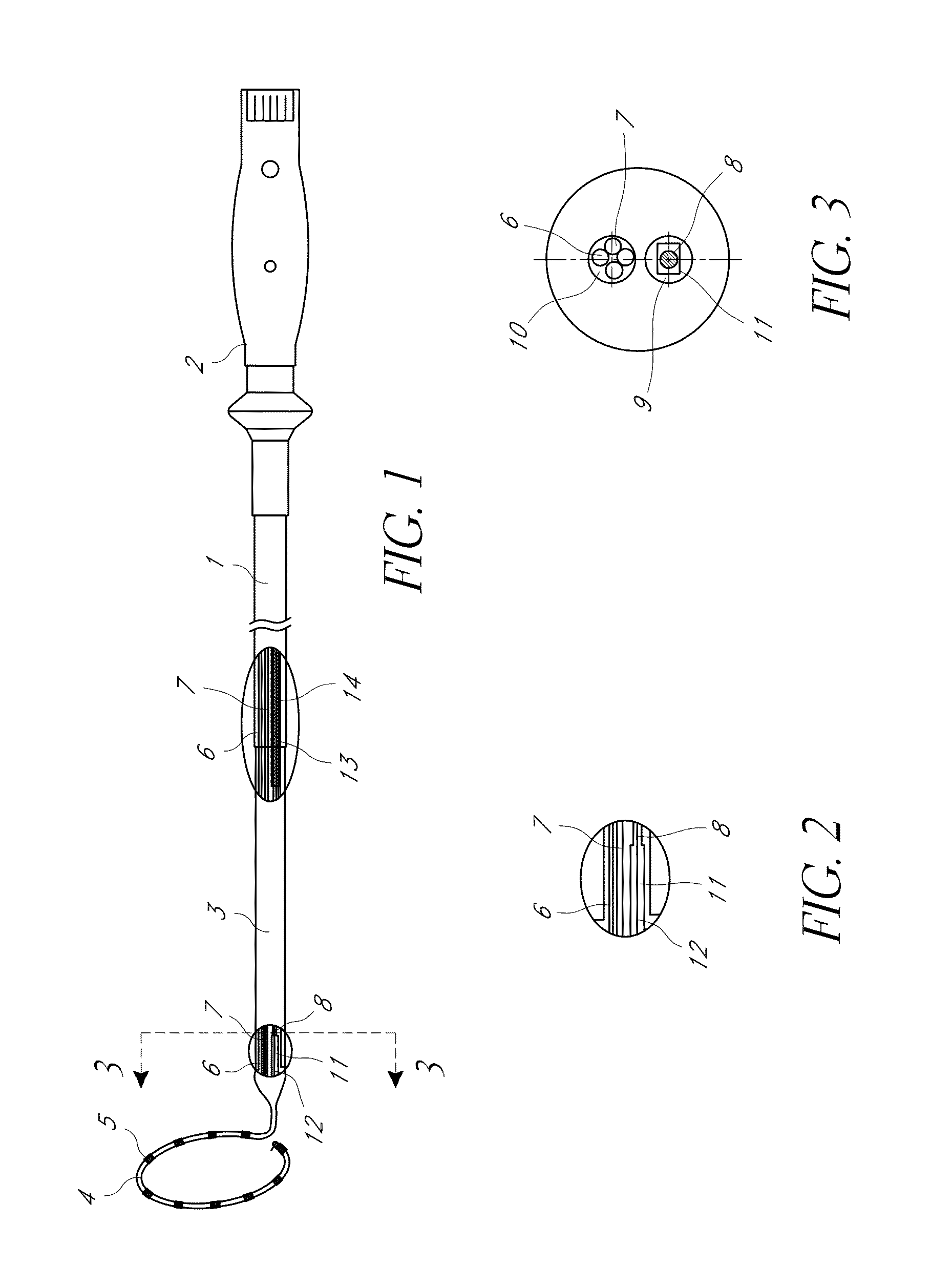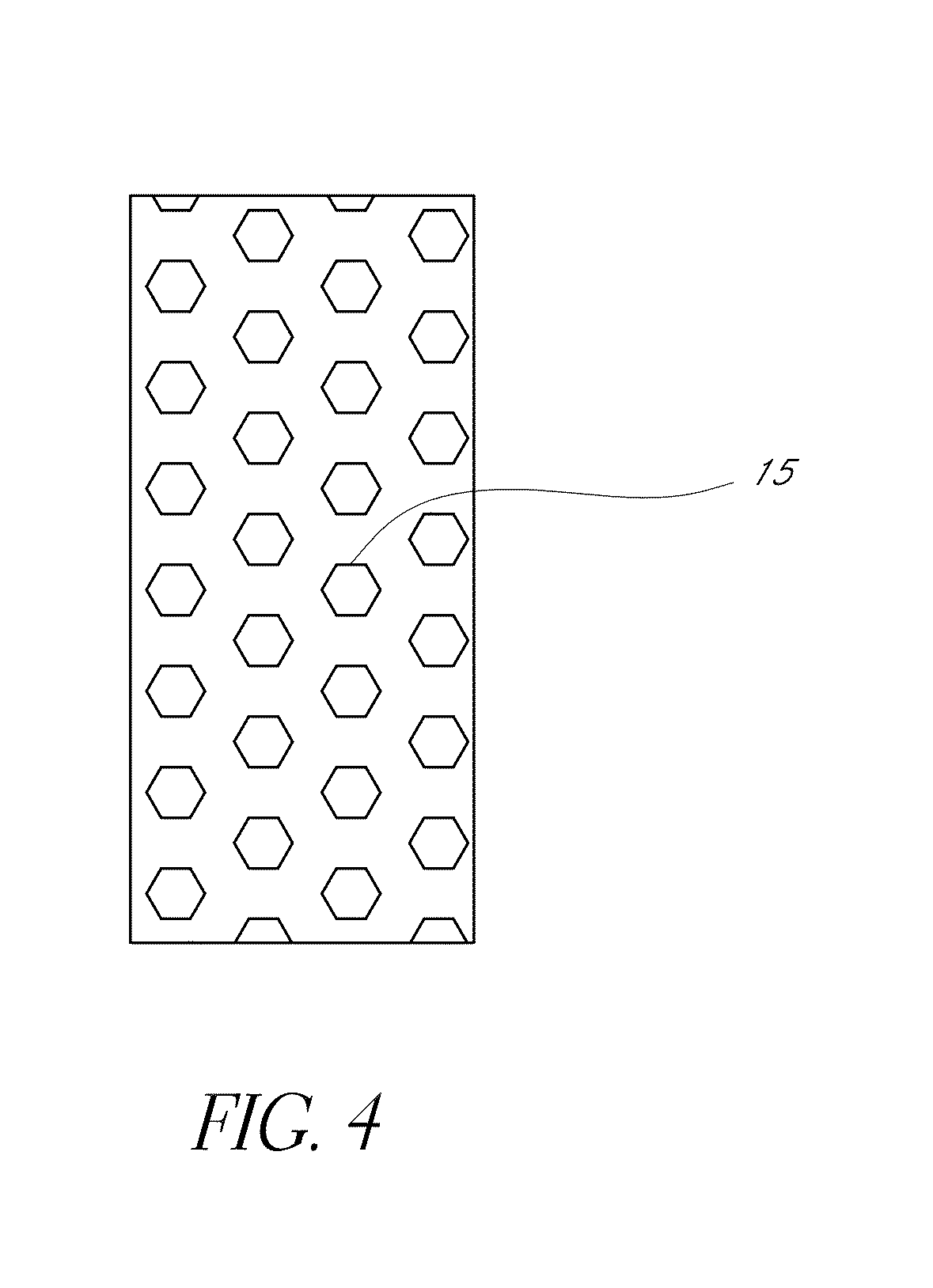Multi-pole synchronous pulmonary artery radiofrequency ablation catheter
a radiofrequency ablation catheter and pulmonary artery technology, applied in the field of medical devices, can solve the problems of poor therapy efficacy, limited clinical treatment of pulmonary hypertension, side effects, etc., and achieve the effects of short operation time, simple operation and avoidance of heating blood
- Summary
- Abstract
- Description
- Claims
- Application Information
AI Technical Summary
Benefits of technology
Problems solved by technology
Method used
Image
Examples
example 1
[0055]Through the example below and with reference to FIGS. 1-3, some of the technical solutions that can be achieved by various embodiments are further described below.
[0056]In some embodiments, a multi-pole synchronous pulmonary artery radiofrequency ablation catheter for de-sympathetic in the pulmonary artery can include a catheter body 1 that has a distal end and a proximal end. The distal end can be provided with a flexible end 3 and the proximal end can be provided with a control handle 2. A pull wire can extend in the catheter body.
[0057]Preferably, the catheter body can be made of a polymer material, which is a poor heat conductor, so that it can avoid transmitting or reduce the amount of heat transferred from the electrodes to the flowing blood contacting the catheter body, and thereby can better prevent the electrode from heating the blood flow.
[0058]The flexible end 3 can include a proximal end and a distal end. An annular ring 4 can be arranged on the distal end. The fle...
example 2
[0074]A multi-pole synchronous pulmonary artery radiofrequency ablation catheter comprises a control handle 2, a catheter body 1, and an annular ring 4. The control handle 2 can be provided with an adjustment apparatus, the catheter body 1 can be hollow, and a cavity can be arranged in the catheter body 1. One or more lead wires 6, temperature sensing wires 7 and a pull wire 8 can be arranged in cavity.
[0075]One end of catheter body can be flexible, and the flexible end 3 can be connected to the annular ring 4. The other end of the catheter body can be connected to the control handle 2. One end of the pull wire 8 can be connected to the flexible end 3, and the other end of the pull wire 8 can be connected to the adjustment apparatus of the control handle, the adjustment apparatus adjusts the tension of the pull wire 3 to control the curvature of the flexible end. This allows the operator to control the handle with one hand and adjust the curvature of the flexible end 3 easily. There...
example 3
[0084]Example 3 is similar to Example 1 and Example 2, and the differences can include an infusion tube arranged in the catheter body, a group of evenly distributed through holes 15 (FIG. 4) arranged on one or more of the electrodes 5, with a bore diameter of 1 μm. One end of the infusion tube can be connected to the electrodes 5 through the annular ring 4 such that fluid diffuses out from the through holes 15 on each of the electrodes 5. For example, the annular ring 4 can include or define at least one lumen extending between a proximal end of the annular ring 4 and to the through holes 15 so as to form a closed fluidic connection. In such embodiments, a distal end of the infusion tube can be connected to the proximal end of the lumen in the annular ring 4. The other end of the infusion tube can be connected to a transfusion system, such as a constant-flux pump or other known pumps.
[0085]When electrodes 5 generates current, the liquid automatically diffuses from the through holes ...
PUM
 Login to View More
Login to View More Abstract
Description
Claims
Application Information
 Login to View More
Login to View More - R&D
- Intellectual Property
- Life Sciences
- Materials
- Tech Scout
- Unparalleled Data Quality
- Higher Quality Content
- 60% Fewer Hallucinations
Browse by: Latest US Patents, China's latest patents, Technical Efficacy Thesaurus, Application Domain, Technology Topic, Popular Technical Reports.
© 2025 PatSnap. All rights reserved.Legal|Privacy policy|Modern Slavery Act Transparency Statement|Sitemap|About US| Contact US: help@patsnap.com



